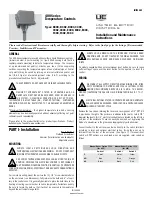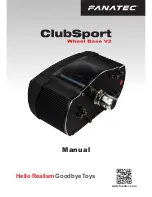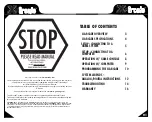
Curtis PMC 1209B/1221B/1221C/1231C Manual
31
TROUBLESHOOTING & BENCH TESTING
1. First, check both sides of the control wiring fuse.
2. Check both sides of the polarity protection diode to make
sure its polarity is correct.
3. Check both sides of the keyswitch.
3. Check both sides of the throttle microswitch.
4. Finally, check the contactor coil and controller KSI.
2-E
If the contactor coil and KSI are getting voltage, make sure the contactor is
really working by connecting the voltmeter across its contacts (the big
terminals). There should be no measurable voltage drop. If you see a drop,
the contactor is defective. (We assume the recommended precharge resistor
is in place.)
TEST
3
Check the potbox circuitry
The following procedure applies to the standard throttle input con
fi
guration for
these controllers, which is a nominal 5k
Ω
pot connected as a two-wire rheostat (0
= full off, 5 k
Ω
= full on), and also to 5k
Ω
–
0 con
fi
gurations. If your installation
uses a controller with a throttle input other than 0
–
5k
Ω
or 5k
Ω
–
0,
fi
nd out what
its range is and use a procedure comparable to the one below to make sure your
throttle is working correctly.
3-A
With the keyswitch off, pull off the connectors going to the throttle input
of the controller. Connect an ohmmeter to the two wires going to the
throttle and measure the resistance as you apply and release the throttle. The
resistance at the limits should be within these ranges:
RESISTANCE
(in ohms)
STANDARD
0
–
5k
Ω
POT
5k
Ω
–
0
POT
Zero throttle:
0
–
50
4500
–
5500
Full throttle:
4500
–
5500
0
–
50
3-B
If these resistances are wrong, it is because the pot itself is faulty, the wires
to the pot are broken, or the throttle and its linkage are not moving the
potbox lever through its proper travel. Apply the throttle and verify that the
potbox lever moves from contacting the zero-throttle stop to nearly contact-
ing the full-throttle stop. If the mechanical operation looks okay, replace the
potbox.
















































